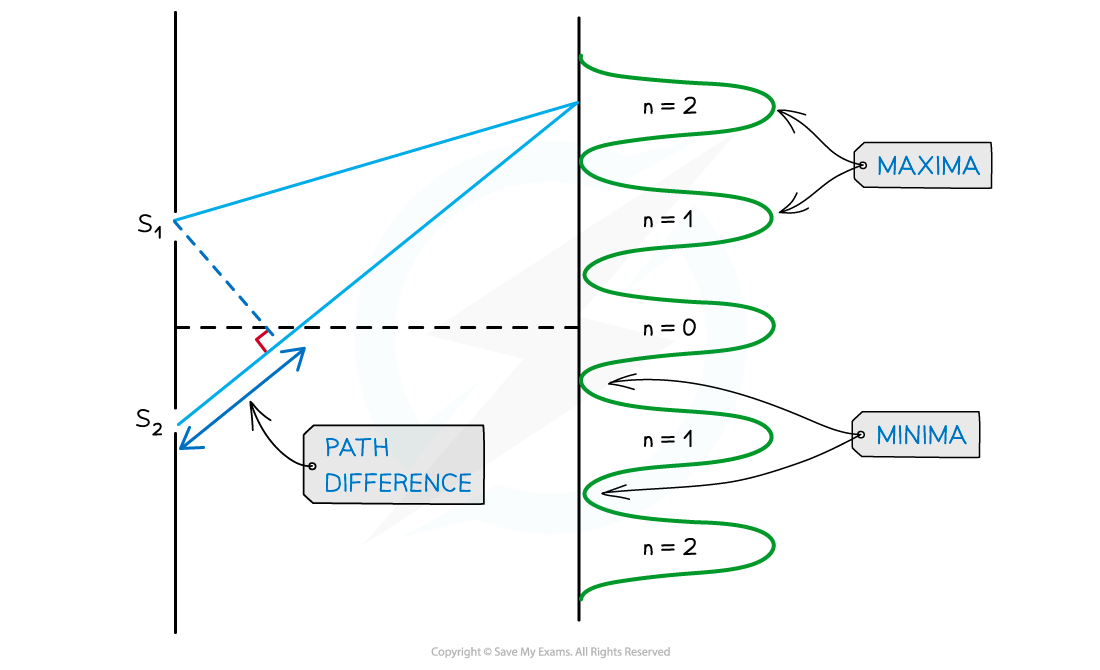Demonstrating Two Source Interference
- Interference of sound, light and microwaves can be demonstrated with slits or diffraction gratings
Using Water Waves
- Two-source interference in can be demonstrated in water using ripple tanks
- The diagram below shows diffracted circle shaped water waves from two point sources eg. dropping two pebbles near to each other in a pond
Wavefront interference

Water waves interference pattern from a ripple tank
- The two waves interfere causing areas of constructive and destructive interference
- The lines of maximum displacement occur when all the peaks and troughs line up with those on another wave
Using Sound Waves
- Two source interference for sound waves looks very similar to water waves
Sound wave interference

Sound wave interference from two speakers
- Sound waves are longitudinal waves so are made up of compressions and rarefactions
- Constructive interference occurs when two compressions or two rarefactions line up and the sound appears louder
- Destructive interference occurs when a compression lines up with a rarefaction and vice versa. The sound is quieter
- This is the technology used in noise-cancelling headphones
Using Microwaves
- Two source interference for microwaves can be detected with a moveable microwave detector
Microwave interference experiment

Microwave interference experiment
- Constructive interference: regions where the detector picks up a maximum amplitude
- Destructive interference: regions where the detector picks up no signal
Using Light Waves
- For light rays, such as a laser light through two slits, an interference pattern forms on the screen
Light interference experiment

Laser light interference experiment
- Constructive interference is shown as bright fringes on the screen
- The highest intensity is in the middle
- Destructive interference is shown as the dark fringes on the screen
- These have zero intensity




